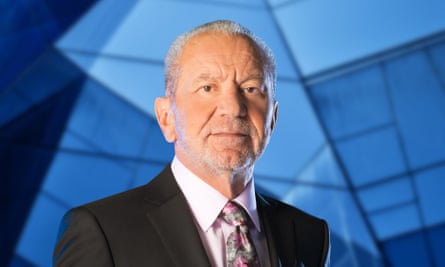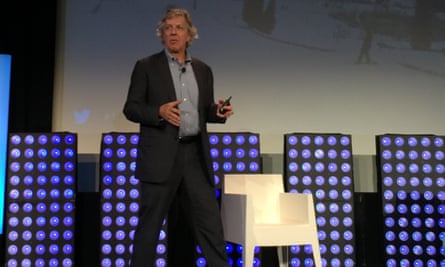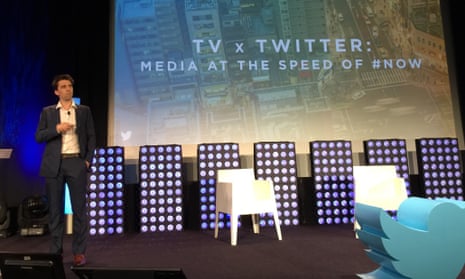“I had a moment when I was talking about quantum television,” said Dan Biddle, Twitter UK’s director of broadcast media partnerships, as he perched in a meeting room shortly after his company’s keynote at the Mipcom conference in Cannes.
“It was this sense of where TV used to be seen as a wave where you just sit and it crashes over you for an hour and you’re consumed, now there’s a sense that it’s actually made up of particles, like light.
“And each one of these particles can become a bigger moment on Twitter, on social, because everybody will gather around that, and it will be talked about and referenced again and again.”
There have been plenty of those moments for Twitter in the last year, from political debates to Bake Off bread lions. And while Biddle’s own quantum moment may not have lasted long enough to make it into his keynote, it’s a useful primer on the way Twitter wants to be seen by the TV industry.
Like Facebook, Twitter is love-bombing the TV industry in the hopes of getting broadcasters and producers to help drive more conversation around their shows on the social networks – not to mention spending more money on ads to attract new and lapsed viewers to those programmes.
Going native
Yet Twitter has become a broadcaster of sorts itself: its 316 million active users currently watch 370 years worth of video every day on the service. That viewing is up 250% in the last six months alone, with 90% of it happening on mobile devices.
That’s giving Twitter a better idea of what kind of videos its users like best. “They like shorter clips – 30 to 45 seconds – and we also know that it should be something that people will want to share with each other,” says Fred Graver, creative lead for Twitter’s global TV team.
Native video is growing strongly for Twitter, although direct comparisons with Facebook are tricky due to the difference between their milestone metrics. Twitter uses watch-time, with that 370 years of daily viewing meaning roughly 18 minutes for each active user a month.
Facebook quantifies its video growth by “views”, with its 4bn daily views translating into about 80 views for each active user a month. Suffice to say, both are growing rapidly.
For now, native video on Twitter tends to be about clips, whether uploaded by broadcasters and TV stars or by users. Both Biddle and Graver see potential for original shows – as in super-shortform formats made for Twitter – in the future.
“People are going to start to say ‘well, yeah, there’s appointment-to-view TV, and then there’ll be appointment-to-tweet TV as well’,” says Biddle.
“This will come from the creative community. They’ll be like ‘OK, now that we have all these tools, what is a quote-unquote ‘show’ on Twitter?” adds Graver.
Developing relationships with the YouTubers who’ve developed their own shortform shows on Google’s video site may help, although Twitter also hopes it can become a conversational channel for those formats too, according to Graver’s anecdote about his trip to the YouTuber-packed VidCon conference earlier in 2015.
“There was a panel when they were literally saying ‘Well, the comments section on YouTube doesn’t work any more, so I talk to my audience on Twitter’,” he says.
“Some of them even do a thing now where they release their video [on YouTube] and then tweet out ‘Just put my video up, let’s have a viewing party in an hour on Periscope: watch it with me!’ So they’re using Twitter to light the spark and get the conversation going.”
Up Periscope
Periscope’s role in that evolution looms large in the conversation. Twitter’s live-streaming video app launched earlier this year, with 40 years worth of Periscope video now watched every day according to Biddle, who is keen to talk about its use by TV stars from Ellen DeGeneres to Ant and Dec.
“You have the audience in the palm of your hand, and those are the best Periscopes: the ones where this person has taken you with them and chatted to you in that very intimate way. It’s not the best quality video in the world. The point is it’s a visceral experience” he says.
“It’s very much a ‘now’ experience. And in the case of TV, it’s often those connecting moments that let you behind the scenes: like when Ant and Dec did it before the Britain’s Got Talent finals. ‘Oh, the music’s on. We’ll see you on TV!’. That last line had that ‘this is a moment that we’ve had before we go to the mass moment of television.”
Graver chimes in. “It should be intimate: that palm-of-your-hand thing. It should be very immediate: ‘this is happening right now’. And they should also remember that it’s conversational,” he says.
“That’s the magic of Periscope: you’re holding it up and the hearts are going, and then all of a sudden you’re getting questions. ‘Oh! All of a sudden the viewers can actually just talk to me!’ And if you talk back to them, it’s incredibly rewarding.”
On its main service, Twitter is trying to do a better job of gathering the conversation around TV shows with a new feature called “timelines”, where the most popular tweets from viewers and stars alike are gathered into standalone timelines for individual shows – discovered when an official hashtag appears in your main Twitter timeline.
Biddle says that Twitter’s ambition is to have a timeline for every show, before making the grand claim that “a TV production does not exist without Twitter” – by which he means that every new show now launches with an official account on the social network.
While some broadcasters still see Twitter as mainly for telling fans to share promo videos and tune in on TV – “forgetting that Twitter is a conversation” as Graver puts it – he praises US chatshow host Jimmy Fallon, who Periscopes the rehearsal for his nightly live monologue, inviting fans to spot which jokes change before transmission.
Fallon is leading a charge of late-night US talkshows in using YouTube, Periscope and other social networking tools in-between live episodes.
“Those shows are ahead of the curve of where television’s going to go, which is that the show supports all this other stuff, and then eventually the ad dollars will start shifting back and forth,” says Graver.

Twitter’s got talent
Graver and Biddle talk a lot about the importance of “the talent” – from actors and presenters to screenwriters and showrunners – to programmes’ popularity on Twitter. “The talent is the channel that a TV show is on, as much as the talent is on that TV show,” Biddle says.
When a star has million of Twitter followers, they can become a lightning rod for conversation about a show, and can also drive audiences to watch it. No wonder Twitter encourages them to live-tweet while their shows air.
“Word has spread through the acting community, the talent community. They’re just like ‘You gotta do this’,” says Graver, while Biddle points to British presenters like Lord Sugar and Brian Cox live-tweeting their own shows as examples.
“Twitter, for them, provides almost an extra level of citation. They can add to that conversation. You might only have an hour-long show, but you’ve sparked a lot of debate – and they’re able to pick up and find the pieces that interest them,” he says.
“They can add that extra layer: it’s not a subtitle in the show, but it’s a social layer of subtitles that can bring the deeper aspects to people and reinforce the stories, or correct things that people are maybe misunderstanding, that you can see they’re misunderstanding on Twitter.”
Twitter has a well-documented problem with trolling – particularly harassment of prominent women – which could be an obstacle to persuading some actors to join the conversation.
Taming the trolls isn’t Graver or Biddle’s direct responsibility, but they recognise the issue – while suggesting that the communities around TV programmes can be a positive counter-weight to the negativity.
“One negative tweet out of 10 can make you no longer see the nine tweets that were very positive, and with a billion tweets every two days, amongst that humanity there will be some that aren’t as great as others,” admits Biddle.
“But by and large in those communities around TV shows, there is a sense of ‘I love this show, I’m a huge fan’.”
Graver agrees. “On Twitter, everybody sees the conversation, so you’re kinda held accountable. Once the talent realises why they’re on and what value they bring to the community that they’re engaging with, it becomes much more fun and more meaningful,” he says.
“And then if you’re somebody like Ricky Gervais, it’s like: ‘Bring on the trolls! They’ll just be more entertainment for my fans …’”

Meeting the mainstream
Persuading big stars to tweet more – whether they’re troll-shaming or not – and encouraging broadcasters to promote Twitter on-air is strategically important for the social network.
Under its new (old) chief executive Jack Dorsey, the company is on a mission to reignite its growth by moving into the mainstream. And what is more mainstream than television?
And when a popular show persuades someone to download – or in the case of lapsed users, re-download – Twitter, the new TV timelines and separate Moments feature (which performs a similar curation role for big news events) will be there to entice them to stay.
That’s why TV is so important for Twitter: while money from broadcasters paying to promote their shows will be welcome, it’s their potential to be a funnel for new users that’s the real prize. Although with Facebook courting the TV industry just as eagerly, Twitter will have to work hard.
“The mission continues to be reaching every person on the planet,” says Biddle. “There’s an enormous focus on our users and people who tweet, and they tweet about television,” adds Graver. “I think all of that will fit together.”
How live Periscope video helped ‘get inside’ the Syrian refugees story

Comments (…)
Sign in or create your Guardian account to join the discussion